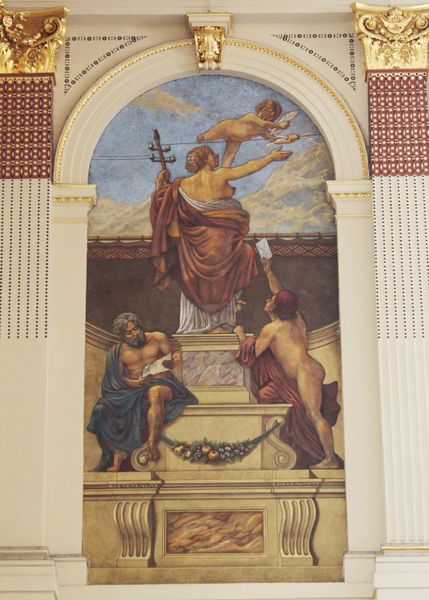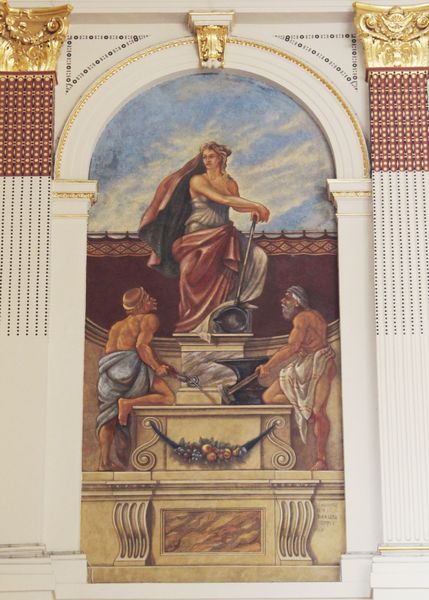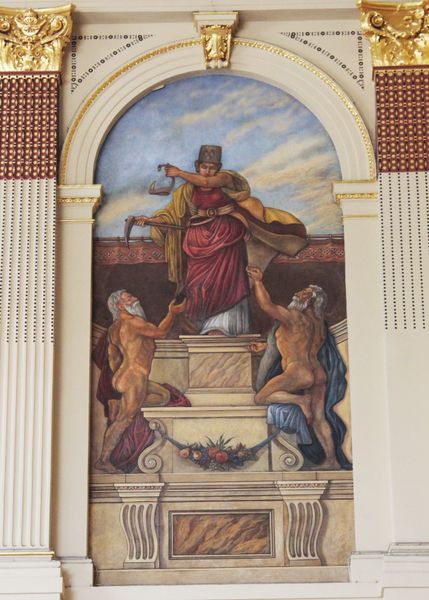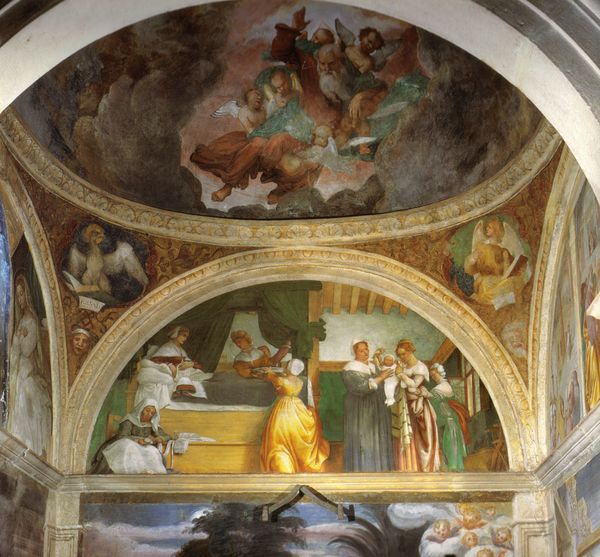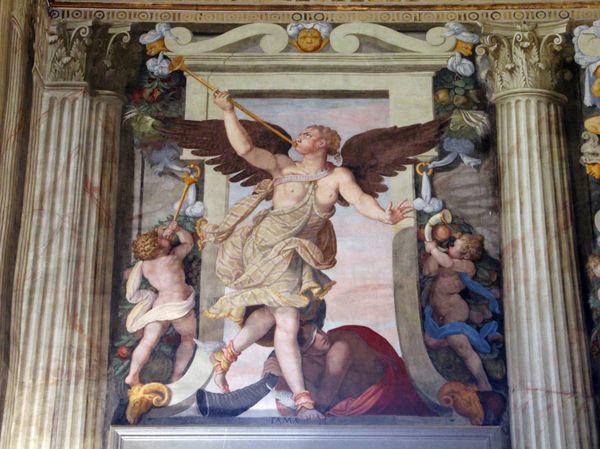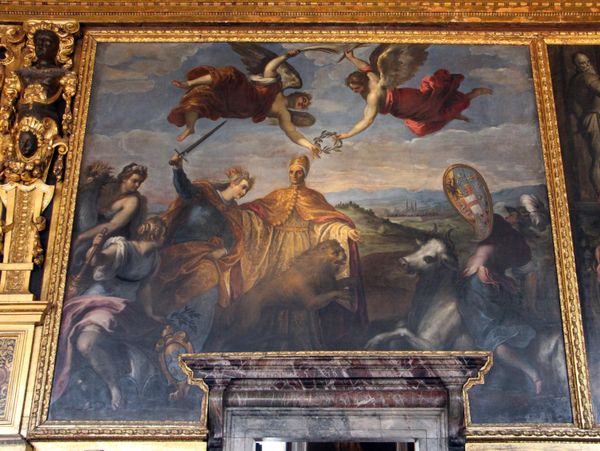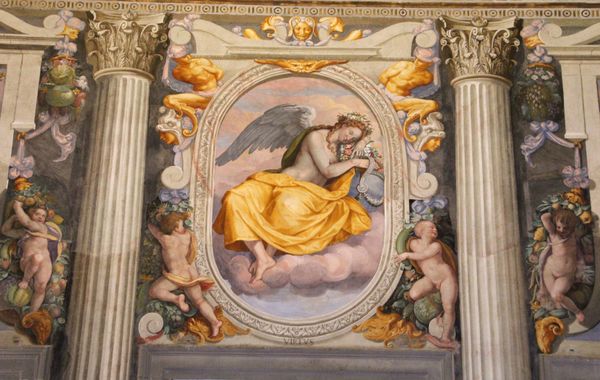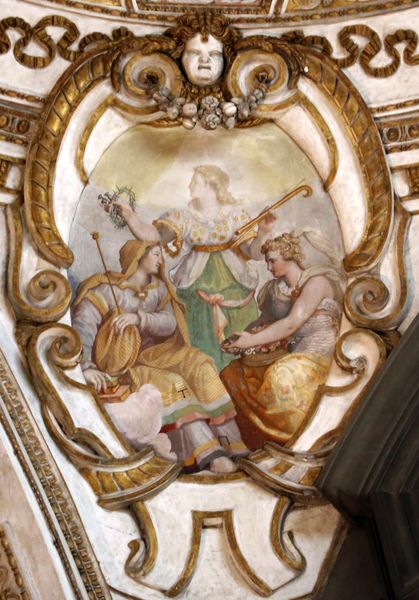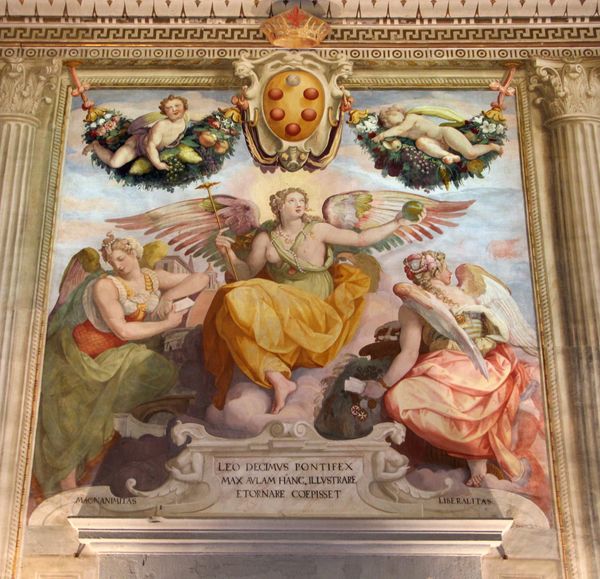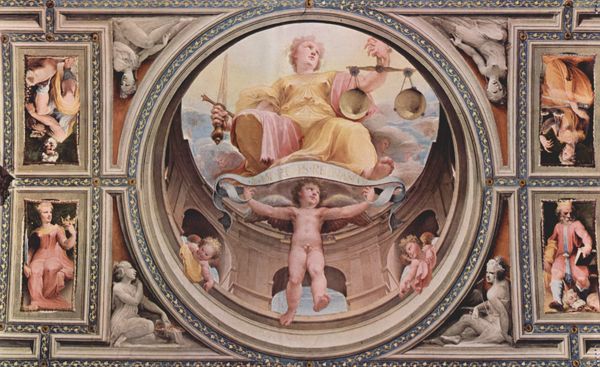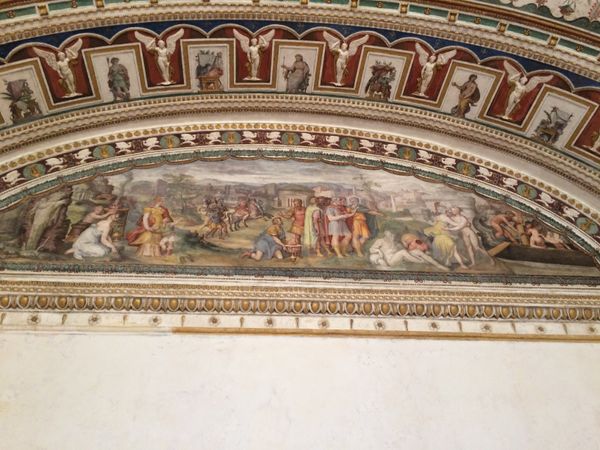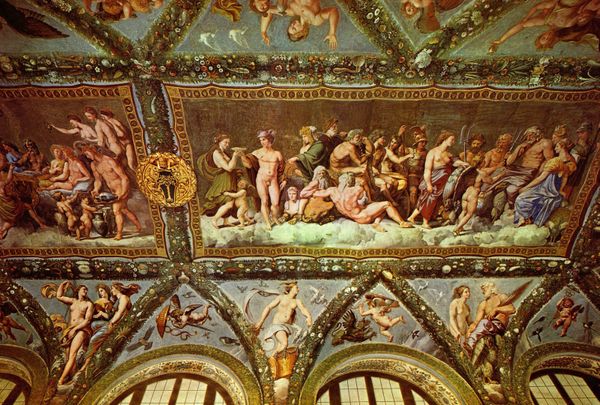
painting, mural
#
allegory
#
painting
#
landscape
#
classical-realism
#
figuration
#
genre-painting
#
history-painting
#
academic-art
#
mural
Copyright: Public domain
Editor: Here we have Károly Lotz's "Trade," painted in 1884. The mural is wonderfully imposing and, in a way, seems to be celebrating commerce. How do you interpret this work through a historical lens? Curator: This mural reflects the 19th-century obsession with allegory, especially in public art. Notice the figures: the central figure, possibly Hermes, presenting an offering. Below, people from different cultures bring tribute. It's academic art designed to promote a narrative of progress and integration under a central authority, probably meant to evoke a shared identity within the Austro-Hungarian Empire. Editor: It seems very optimistic about global trade. Were there dissenting voices at the time about this narrative? Curator: Absolutely. While institutions commissioned works like these to solidify certain ideals, others questioned the actual benefits of expanding trade, especially regarding its impact on various social groups within the Empire and the exploitation of resources in other nations. Did everyone benefit equally from this supposed trade? Editor: It is thought-provoking. The mural, on the one hand, seems to be selling a utopian idea. But on the other hand, I begin to wonder who the real beneficiaries are within the overall framework it presents. Curator: Precisely! This dichotomy helps reveal the function of the art piece itself. Academic art of the time attempted to resolve real socio-economic and cultural contradictions by crafting heroic visions, which masked unequal benefits. The building it is placed in no doubt offers clues about its broader political intent. Editor: I see. So, while seemingly decorative, this mural actively participates in propagating certain beliefs while suppressing others. Curator: Exactly! We can begin to uncover its deeper purpose by exploring the history surrounding its creation. Editor: That is an intriguing way to see art. I’ve never really considered the "politics of imagery" behind a mural, and the implications that trade has to play within culture and identity. Thank you for the insights.
Comments
No comments
Be the first to comment and join the conversation on the ultimate creative platform.
